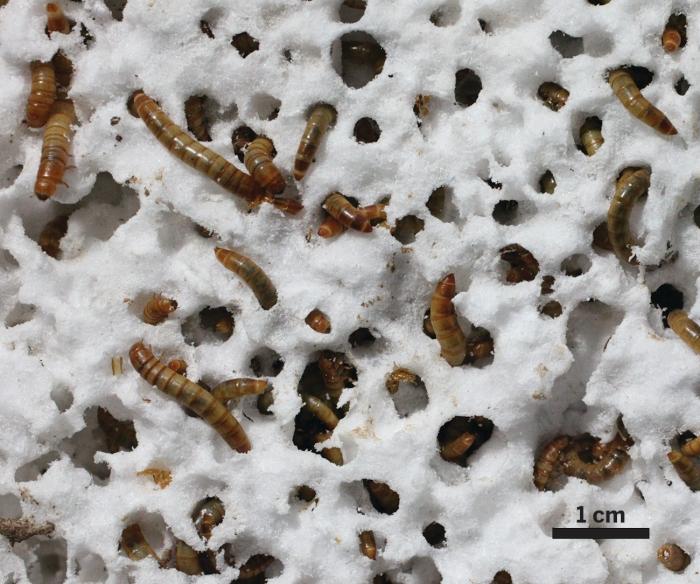Are Worms the Solution?
Plastic has met its new opponent, mealworms.
January 8, 2016
About thirty percent of landfills in the U.S. are composed of plastics. This fact is alarming considering that plastic takes at least five hundred years to decompose naturally. Scientists and researchers have been taking new approaches in hopes of finding an eco-friendly solution to reduce the amount of plastic thrown away in landfills. Plastic isn’t natural, it is anthropogenic, therefore it won’t biodegrade naturally, leaving us the responsibility to find a solution to help get rid of it.
The solution isn’t as simple as just stopping the production of plastic. After all, plastic is such an important part of our daily lives. We use plastic from containers, to cell phones, and even in our windows for insulation. Plastic is so convenient since it is durable, light weight, flexible, and most importantly, it is inexpensive to produce. Some states have started a recycling program for plastic, but even this effort isn’t enough to reduce the problem plastic has presented our society. So what could possibly biodegrade plastic without causing further damage to our ecosystem?
On September 21, 2015 some engineers from Stanford University and Beihang University, in Beijing, China, presented a new solution in an article in Environmental Science & Technology. There solution was simple, mealworms. Mealworms, also known as Tenebrio Molitor, are the larval form of the mealworm beetle, a species of darkling beetle. So how can these worms help solve our plastic problem?
The research presented by these universities showed that a unique bacterial enzyme found in the gut of mealworms helped speed up the plastic’s breakdown. The research also shows that the enzyme not only works inside the mealworms but outside as well. However, the research also showed that the enzyme was much more efficient when it was inside the mealworm. This research could be revolutionary to successfully biodegrade plastic.
Although, mealworms might seem like the solution, that doesn’t mean we should rush out and release mealworms near landfills. The scientists’ findings is just the beginning to over biodegrading plastic. More research needs to be done in order to figure out any possible consequences. Not to mention the price of buying enough mealworms to eat all the plastic in landfills. Regardless of the price, researchers now know what the mealworms can do and can start figuring out which enzymes are responsible for the breakdown of the plastic.
In the meantime don’t underestimate mealworms and don’t be too surprised the next time you see a new trash bin full of worms.











































































